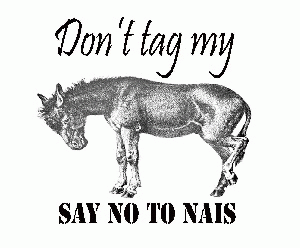Let’s compare safe food to the US government’s new ‘Food Safety’ legislative scheme from a risk assessment perspective: perceived vs. actual risk to our eating raw food, and our right to do so without government interference.
Life is all about risks and managing risks. Almost everything we do involves some kind of risk. One of the most dangerous risks that most of us undertake is driving a car. About 40,000 people die each year in the USA alone because of driving a vehicle and well over 100,000 are seriously injured, including many who are maimed for life. By comparison, only about 5,000 people in the USA die from food borne illness.
It is in this context that we must consider food safety. There are potential hazards with all kinds of food. Some hazards are quite serious and can be fatal, such as virulent bacteria and some types of food poisoning. However, most food hazards cause illness, but are not fatal. Food can become contaminated by pathogenic bacteria such as salmonella or virulent strains of e-coli. It is mainly people with compromised immune systems who are at greatest risk from pathogenic contamination. Part of our challenge is in improving public health to resist infection. Most bacteria are not bad and many are very beneficial. Ironically, we need high quality probiotic foods like clean raw milk to help strengthen our immune systems.
So what is the best approach to tackle the problem of food borne illness? Should we require that all foods be sterilized or pasteurized before being sold or eaten? Should we sacrifice food quality for food safety? Should we require that all foods be traced from origin? None of these measures will guarantee safe food. Instead, they will degrade our food quality by damaging our food and forcing industrial and franken food on everyone. Large business interests would like nothing better and are working diligently to push legislation around the world to that end. Ultimately, government should empower the consumer to choose their own level of food safety by using food labeling requirements and by regulating the large businesses that cause the vast majority of food safety issues.
Unfortunately, fear is often cultivated by large business interests which recognize that rules can be covertly changed to eliminate competition from smaller businesses by forcing expensive measures to be taken in the name of "food safety." Legislation to this end is currently in the U.S. Congress masquerading as "food safety" measures that are in reality thinly disguised measures to force small farms out of business and thus eliminate farmers markets and local food sources. We need to be very careful to address the largest sources of risk, which are from large businesses.
Small farms and businesses should be exempted from costly rules. The amount of risk from small businesses is almost negligible compared to the risks inherent in large operations. We need to find ways to encourage small farms and businesses that sell directly to local consumers. Small farms and businesses that sell to local consumers already have plenty of incentive to provide clean safe food, or they will quickly lose their business.
It's the large global conglomerates that need to be constrained for food safety. They can easily sacrifice a few thousand customers here and there to increase their profit.
Is the cure worse than the disease?
We could reduce speed limits nationwide to 30 miles per hour and probably save at least 20,000 lives and 50,000 serious injuries every year in the USA alone. But that would infringe on our individual freedom to choose our level of risk within reason. Similarly, we could require that all foods be sterilized before being sold. But that would infringe on individual freedom in the right to eat raw unadulterated foods. We need a balance in food safety that supports individual freedoms to eat raw and healthy local foods, but reduces the risk of food contamination. Ideally, efforts to eliminate contamination should be made during production of the food and should preserve food quality. Sterilizing and pasteurizing food may reduce nutrients and may produce harmful chemicals. We need to find and minimize the sources of contamination. Consumers should not have to sacrifice food quality for food safety.
Labeling
If food is sterilized, it should be labeled so that those who want raw foods can choose a different product that is not sterilized. If food is grown with pesticides or contains genetically modified organisms, it needs to be labeled for food safety to empower the consumer to choose. Some individuals may be willing to sacrifice food quality for food safety, but that should be a freely made personal choice. Milk should be labeled as pasteurized or raw to let the consumer choose. Proper labeling is an important key to individual freedom in choosing foods to match individual preferences.
Let's choose food freedom over food facism!
FURTHER READING:
Fake food safety legislation - act now to save our farms.
HR 875 - The Death of Farmers Markets, CSAs and Local Food
Read the full bill here:
Contact your government representatives and inform them you oppose HR 875 and any legislation that would degrade food quality or unduly burden small farms and small businesses.
National Animal Identification System information
I'm a Texas meteorologist and engineer with a newfound interest in health. I have a Master's Degree in Engineering with a major in Meteorology and minor in Environmental Health Engineering.






